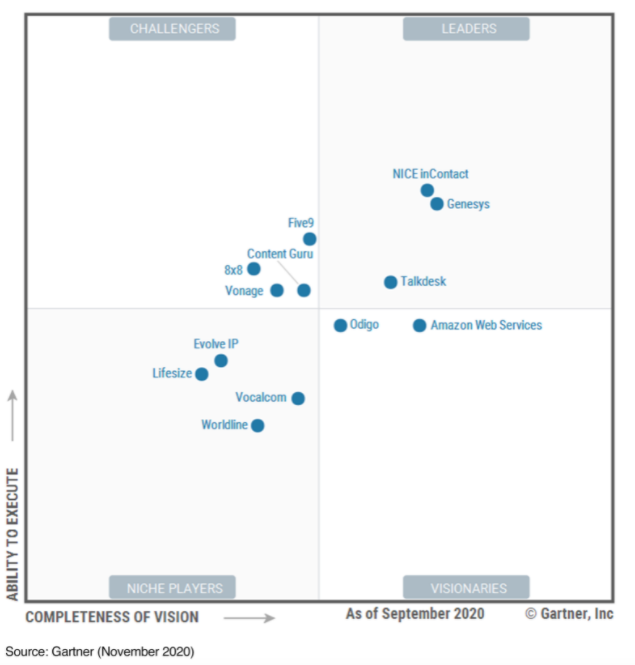Advanced Call Center Technologies You Should Know About in 2022
Call Center Technologies evolved & deployed into Contact Center as a Service (CCaaS) in 2020 through this year. The ability to turn up a Virtual Contact Center with remote agents, Omnichannel support and key customer data insight were all reasons organizations shifted toward this technology. Legacy PBX and SIP trunking on-premises environments were no match for covid where call center agents had to work remotely. It was very difficult to unwind since SIP Trunks were contracted with current telecom carriers and depreciating assets such as the PBX, Phones, Headsets, and more were on the financial reports of every organization who had them.
If you are looking to replace a legacy PBX Call Center environment, know what comes standard and other added uplift Monthly Recurring Charges (MRC) exist. Fortunately, new Contact Centers deployed are keeping some of the original innovative functions agents and IT organizations are accustomed too. However, Contact Center decisions are moving to the Head of Call Centers for the tech they require to support customers, shifting decision making away from the traditional IT organization.
Existing Call Center Tech which will improve with Contact Center software:
Interactive Voice Response (IVR) – IVR was developed to allows callers to interact with a system in a computer environment using DTMF ones on a keypad. Think “press 1” for an operator or more advanced speech recognition to navigate in a menu driven environment.
Automatic Call Distributor (ACD) – ACDs route incoming calls to the most qualified call center agent or one that is available to support an incoming customer needs. This tech was developed to use rule-based logic and instructions such as caller ID or the IVR response to direct how the call should be handled. This helps organizations delineate customer service from sales opportunities for example.
VOIP/SIP Trunking: More organizations will gravitate away from SIP trunking as they decommission o- premise legacy PBX environments and favor dedicated internet connections routing VOIP traffic. This includes at the office as internet pricing becomes cheaper and Cloud Unified Communications becomes the norm, company operators will remove the on-premises burden.
Computer Telephony Integration (CTI): CTI was first built to help with automatic dialing, screen pops and transfers of calls. The CTI platform and logic has advanced and will continue to play a vital role in Contact Center environments, mostly described as something different or proprietary by vendor.
Customer Relationship Management (CRM): In the early days it might have been Siebel but today it’s the likes of SalesForce, HubSpot, Bullhorn and many others integrating with Contact Center organizations. Click to Dial, Call Notes, API integration for Omnichannel and a slew of other data will continue to be captured in company CRM. The CRM will be a focal point to drive analytics across Customer Journeys as CX plays a crucial role in nurturing accounts for Lifetime Value. Additionally, Data from CRM must be secured including options to lock down the remote agents.
Technology you can expect Contact Centers provide better than a legacy PBX:
Call Recording: Certainly, each US State or Country have their specific Call Recording regulations they must govern and adhere for sever penalty can occur. However, with Cloud infrastructure costs becoming less-expensive, organizations can take advantage of storing conversations quickly and scalable instead of building large repositories. Compliance, Training, Investigations and Customer Analytics will all drive Contact Center Call Recording needs.
Mobile inbound/outbound: Agents now have zero boundaries and can work remotely both using their soft phone capabilities on a laptop or mobile cellphone. This will allow organizations to hire agents anywhere especially in Tier2, Tier3 markets where compensation is lower and the ability to follow-the-sun coverage model becomes a standard.
Voicemail Transcription: Many legacy pbx and call center platforms do not offer voicemail dictation to email. This is a huge value and affords the ability to quickly assess a customer needs compared to listening in on the entire voice mail. Plus, the option to forward the email text to Contact Center Operations and Directors is easily achieved. Lastly, all this dictation can be embedded into various AI and CRM options against customer profiles, needs, tickets and cross-sell opportunities.
Omnichannel: Omnichannel or Omni-Channel strategy and execution is no longer a nice to have, it’s a must. Customer interaction via Phone, Email, Social, SMS Text, Enterprise Chat or other software integrations has become the number one investment. The customer demographic has changed and the technology for all scaled so quickly that organization who embraced Omnichannel in their Contact Center are ahead of the curve.
Contact Center as a Service (CCaaS) is so critical for organization scale and support of customers, Gartner has a Magic Quadrant covering some of the top providers. More Contact Center providers and niche players are entering the space solely to improve the Customer Experience. We anticipate the 2021 Contact Center as a Service Gartner Magic Quadrant to change with possible new providers added and some removed however it is a race to the top when it comes to customers.

If you are looking to build or retrofit your existing Contact Center, we recommend at a minimum designing these technologies which should be standard in your deployment. Most vendors have these critical options out of the box or provide easy to integrate API calls to select vendors for your agents. Contact Center Director of Operations will be pleased and will ask why they didn’t migrate a deployment earlier!
Contact Center as a Service Technologies to use in 2021
| Contact Center Technology
|
Description |
| Compliance | Self-Reported Compliance which the vendor in use Audits (CPNI, HIPAA, PCI, DSS, SOC, SOX etc.)
|
| Cloud Application Integration | SalesForce, HubSpot, BullHorn, Microsoft Dynamic & Teams, NetSuite, Zendesk, Jira, Slack are mainstays.
|
| Omnichannel Integration | Outbound Dialers, Inbound Voice, eFaxing, SMS/MMS, Co-Browse, Video, Queue Callback, Social Media, Enterprise Chat options.
|
| Supervisor Tools | Whisper/Barge, Call Record, Dictation (especially for CRM data-entry),
|
| Customer Success (CS) & Customer Experience (CX) | Language Support, Omnichannel tools (noted prior) |
| Email Integration | Microsoft O365, G-Suite
|
| Disaster Recover | Remote Call Forwarding, Off-Site Datacenters, Global NOCs
|
| Call Analytics | Call Details, ability to leverage APIs into |

Still unsure about which Contact Center features are required or if you need to adjust your strategy? Contact Us for a free architectural discussion so we can overlay suggestions on Omnichannel Customer Success workstreams for your business.
Related Posts
2 Comments
Comments are closed.
Recent Posts
- How Laser Satellite Communication Breakthroughs Compete with Starlink
- AI-Powered Humanoid Robots: Transforming Business, Homes & Connectivity
- Top IT & Network Design Consultants in Boston and New England: Macronet Services
- Top AI Consultants in New England: Why New Hampshire’s Macronet Services Shines in Boston and Beyond
- IXPs in the US and Internet Peering
Archives
- July 2025
- June 2025
- May 2025
- April 2025
- March 2025
- February 2025
- January 2025
- December 2024
- November 2024
- October 2024
- September 2024
- August 2024
- July 2024
- June 2024
- May 2024
- April 2024
- March 2024
- February 2024
- January 2024
- December 2023
- November 2023
- October 2023
- September 2023
- August 2023
- July 2023
- June 2023
- May 2023
- April 2023
- March 2023
- February 2023
- January 2023
- December 2022
- November 2022
- October 2022
- September 2022
- August 2022
- July 2022
- June 2022
- May 2022
- April 2022
- March 2022
- February 2022
- January 2022
- December 2021
- November 2021
- October 2021
- September 2021
- August 2021
- July 2021
- June 2021
- May 2021
- April 2021
- March 2021
- December 2020
- September 2020
- August 2020
- July 2020
- June 2020
Categories
- All (19)
- Satellite (1)
- Artificial Intelligence (3)
- Travel (1)
- Sports (1)
- Music (1)
- News (271)
- Design (3)
- Clients (12)
- Uncategorized (1)
- Tips & tricks (25)
- Inspiration (9)
- Client story (1)
- Unified Communications (196)
- Wide Area Network (308)
- Cloud SaaS (60)
- Security Services (71)





[…] or service to a true “Experience”. The goal for next generation contact center as a service (CCaaS) solutions should be to imprint your brand as an authentic purveyor of trusted service; at every […]
[…] exponentially as legacy systems were replaced with cloud-native contact center as a service (CCaaS) platforms. In parallel to the growth of CCaaS, the popularity of social media exploded and […]